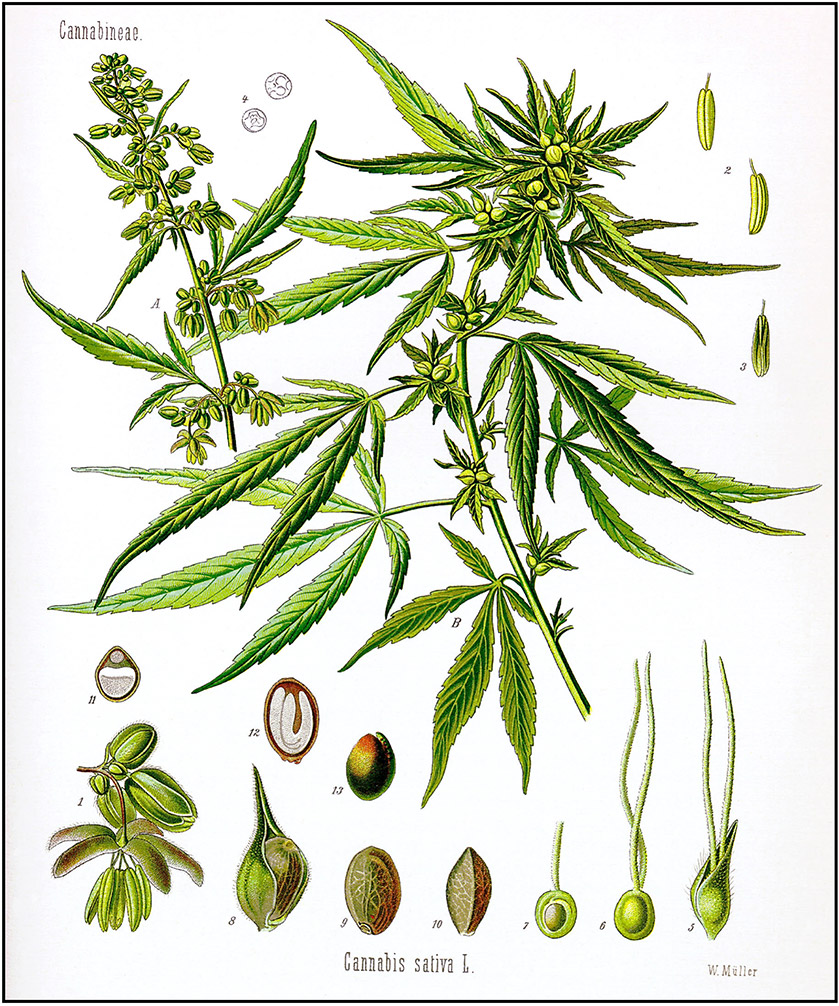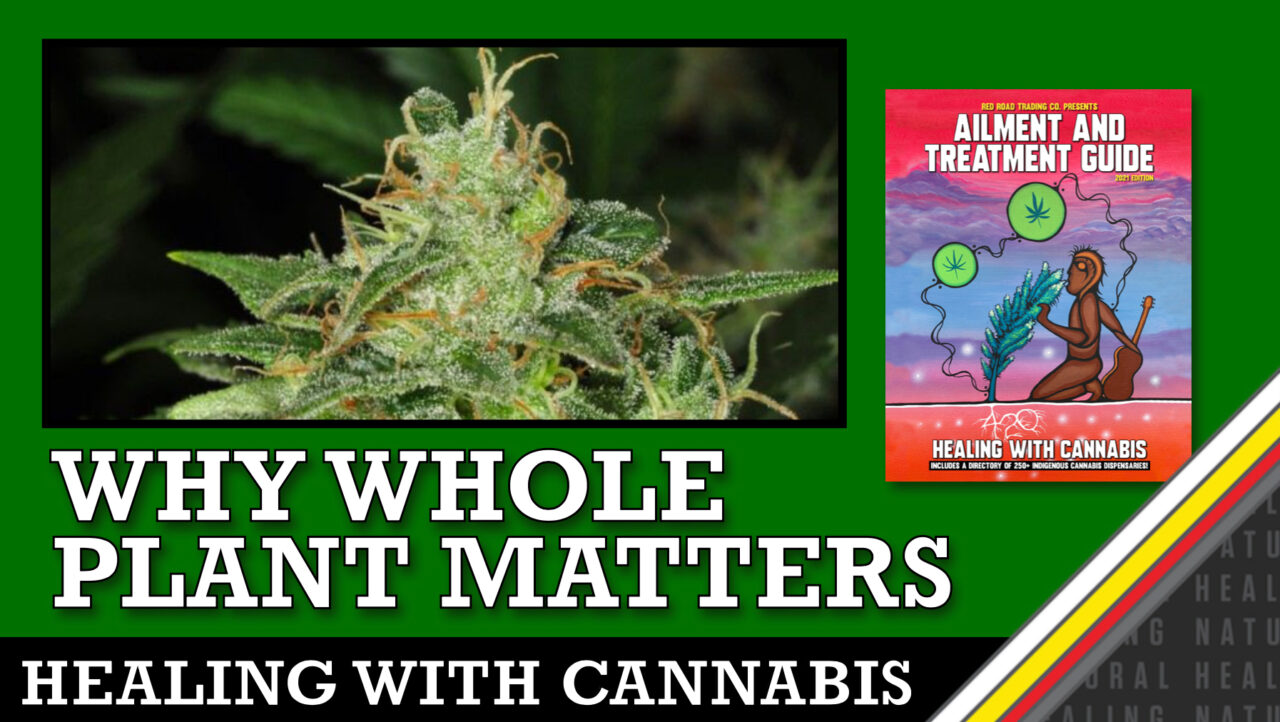Take a close look at your cannabis buds. They’re covered in a sticky dusting of crystal resin, which contains hundreds of therapeutic compounds known as cannabinoids and terpenoids.
We assume you’re well acquainted with THC and CBD, but these are just two among many important players working together to produce specific effects. This interactive synergy between marijuana compounds has been coined the “entourage effect,” and once you know what this is, you’ll see why medicines containing only THC or CBD aren’t sufficient for many medical conditions.
THC-only medicines primarily refer to synthetic renderings of THC, the two most popular being Marinol (dronabinol) and Cesamet (nabilone). These are legal pharmaceuticals primarily prescribed to treat cancer-related nausea, but their efficacy is questionable. A 2011 survey on forms of consumption found only 1.8% of 953 patients prefer synthetic THC pharmaceuticals over inhaled or infused methods. Furthermore, it can take hours for a THC-only pill to deliver relief whereas inhaled methods take effect immediately.
CBD-only medicines have been gaining momentum in recent years following the media frenzy around Charlotte’s Web, a non-psychoactive cannabis strain that was processed into a CBD-rich oil for an epileptic child. This miraculous remedy prompted several states to adopt CBD-only laws under which THC-rich medicines remain illegal.
That is not to say that synthetic, hemp-based, and CBD-only medicines aren’t effective options for many patients, especially as laws limit access to alternatives. These types of products have served a monumental role both as medicine and as a legislative stepping stone. But what else can patients get from whole plant medicine?
Applications of the Cannabinoid Ratio
The most recent research into THC:CBD ratios comes out of the pharmaceutical industry, specifically around the GW Pharmaceuticals Sativex, which has a 1:1 ratio of THC and CBD. In the clinical trials phase of drug development, researchers examined the effects of THC, CBD, and combination extracts on sleep, pain control, and muscle spasms. They found that 1:1 THC-CBD extracts provided the most therapeutic relief across all categories.
In cancer, cannabis has long been credited with helping people combat the nausea associated with chemotherapy. Furthermore, THC and CBD each possess cytotoxic (cell destroying) and anti-angiogenic (prevention of development of new blood vessels) properties. These two properties are critical to combating the spread of cancer within the body, making whole-plant cannabis extracts a viable medical option.
According to Dr. Jeffery Hergenrather, President of the Society of Cannabis Clinicians, “while cannabinoid ratios in most cannabis may be about the same, it is the terpene content which typically creates the different qualities that we have parsed as the difference between Indicas and Sativas for some time. It is highly likely that terpenes may very well alter the properties of the cannabinoids. Standardized testing is essential to the advancement of our understanding of this issue.”

2:1 THC to CBD Ratios
Contrary to popular misconception, so-called indica varieties are no more likely to have CBD than sativas. Lab studies by the WercShop, co-sponsored by California NORML, found no relation between chemical profiles, as measured by cannabinoid and terpene content, and varietal types, whether indica or sativa. Breeders have developed special high-CBD hybrids from various genetic stock. Some have virtually pure CBD, while others typically have THC to CBD ratios ranging from 2:1 to 1:2.
The optimal dosage levels of CBD are uncertain due to a lack of human studies. Chronic high doses of up to 1500 mg per day are well tolerated and produce no noticeable physiological effects. However, there is evidence to suggest that the medical benefits of CBD disappear when dosages become excessive. For inhaled medical use, most users prefer varieties with THC to CBD ratios between 2:1 and 1:2. Extremely low-THC varieties are useful for making CBD extracts and tinctures. Unlike THC, CBD does not show up positive on standard drug tests for marijuana.
Cannabinoids and Terpenes
The diverse chemical availability in whole plant medicines is remarkable in its own right, but research looking into how cannabinoids and terpenoids work together adds another level of interest.
Ethan Russo M.D., is a neurologist who has long studied cannabis compounds and their role in the body. In his study “Taming THC: potential cannabis synergy and phytocannabinoid-terpenoid entourage effects,” he details how cannabis compounds influence each other’s mechanisms. We aren’t just talking about the well-known THC-CBD tag team here – even small amounts of terpenes (fragrant oils that give cannabis its smell) can make a difference.
The terpene myrcene, for example, can reduce resistance in the blood-brain barrier, enabling easier passage of other beneficial chemicals. Pinene helps counteract compromised cognition and memory caused by THC. A combination of terpenes pinene, myrcene, and caryophyllene helps unravel anxiety.
Mixing terpenes linalool and limonene with the cannabinoid CBG shows promise in the treatment of MRSA infections. THC plus CBN yields enhanced sedating effects. Linalool and limonene combined with CBD are being examined as an anti-acne treatment.
These examples only scratch the surface of all possible synergies made available to us by way of whole plant therapies. Think of all the medical possibilities waiting for us as the combinational potential of these compounds is unlocked. The thought of how many lives could be changed for the better by such discoveries is almost overwhelming.
What is CBD?
CBD or Cannabidiol is the principal non-psychoactive cannabinoid present largely in the Hemp plant. Along with not having psychoactive properties, CBD is a powerful anti-psychotic drug and valuable for anyone with psychosis or schizophrenia. CBD has been shown to be a better anti-inflammatory than THC and Ibuprofen, it is also effective in treating pain and managing tumors. CBD can also help to relieve anxiety and depression. Due to the fact that it is non-psychoactive and strongly medicinal even in small doses, CBD is highly recommended for treatment of children, the elderly, and anyone who wants to remain clear-headed yet medicated.
Scientific research has shown that CBD may be therapeutic for many conditions, including (but not limited to) chronic pain, cancer, anxiety, diabetes, epilepsy, rheumatoid arthritis, PTSD, sleep disorders, alcoholism, cardiovascular disease, antibiotic-resistant infections, and various neurological ailments.
CBD Hemp Oil Beauty Products provides unique skin protection. Cannabidiol-rich hemp oil comes as an exfoliant, cleanser, eye cream, gel masque, moisturizer and serum. It turns out that it is the real deal – at least for dry skin. There is clinical research that cannabinoids have anti-aging and antioxidant – properties. There are findings confirming that cannabinoids are responsible for lipid production and, therefore, for regulating conditions such as dry skin or acne and have the potential for helping unspecified skin disease.
Vaporization and edible oils
Vaporization is the optimal delivery method for dried flower cannabis. Unlike smoking, vaporization is achieved by heating the cannabis to a temperature that vaporizes, but does not burn the cannabinoids, virtually eliminating the health risks associated with smoking. The effects of inhaled cannabis – whether smoked or vaporized – will be felt in a matter of minutes. It is recommended to pause between inhalations to let the dose be fully realized.
It is important to remember that cannabis taken orally has a slower onset time than when it is vaporized because it is absorbed through the digestive system. Wait at least four hours after the first dose before taking a second of cannabis oils.
Patients should follow extreme caution when dosing cannabis oils for the first time.
Suggested Dosing
For casual users, people who don’t have high tolerances, 10-20 milligrams should be more than enough to feel the effects. 10 milligrams is the recommended serving size for edibles, because you don’t want to take too much at once. In one recent Canadian study, 25 mg of pharmaceutical-grade cannabis with a THC (delta-9-tetrahydrocannabinol) content of 9.4% was effective in reducing intensity of pain, improving sleep and being well tolerated when smoked as a single inhalation 3x/day for five days at low tolerance to THC.



Its amazing